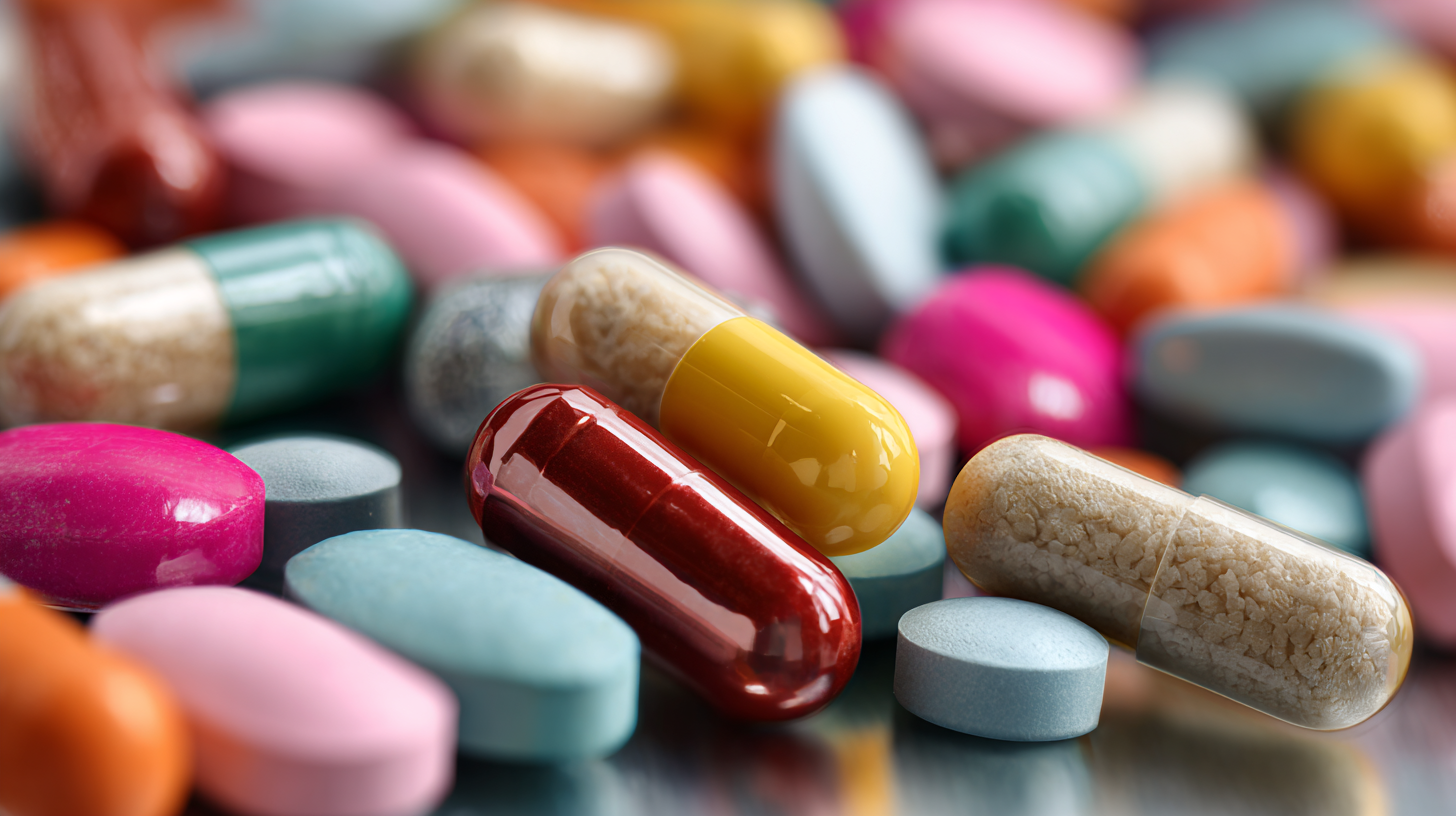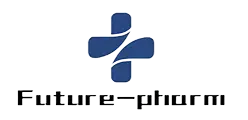
The Ultimate Guide to Sourcing the Best Pharmaceutical Materials for Global Procurement
In the ever-evolving landscape of global procurement, sourcing high-quality pharmaceutical materials has become a crucial priority for manufacturers and distributors alike. As the demand for effective and safe medications continues to rise, the need for reliable suppliers is more vital than ever. This guide aims to provide insightful strategies and best practices for identifying and partnering with top-tier manufacturers who excel in producing pharmaceutical materials. With a focus on leveraging China's immense manufacturing capabilities, we will explore how selecting the right partners can enhance your supply chain, ensure compliance with regulatory standards, and ultimately contribute to the success of your business on a global scale.

Join us as we navigate the complexities of pharmaceutical sourcing and empower your organization to make informed procurement decisions that drive growth and innovation.
Understanding the Global Landscape of Pharmaceutical Material Sourcing
Understanding the global landscape of pharmaceutical material sourcing is crucial for procurement professionals aiming to maintain a competitive edge. As the pharmaceutical industry becomes increasingly globalized, stakeholders must navigate a complex web of regulations, supply chains, and market dynamics. A recent report by Research and Markets highlights that the global pharmaceutical raw materials market is expected to reach $220 billion by 2026, growing at a CAGR of 7.5%. This growth emphasizes the importance of strategic sourcing and long-term partnerships with reliable suppliers across various regions.
**Tips:** Establish strong relationships with suppliers who possess certifications, such as ISO and GMP, to ensure quality and compliance. Additionally, pay attention to the geopolitical factors affecting the manufacturers in different countries, as disruptions can significantly impact supply chains.
Furthermore, companies must stay informed about emerging trends such as sustainable sourcing practices and the increasing demand for biopharmaceuticals. In fact, the shift toward eco-friendly materials is gaining momentum, with a projected market expansion to over $20 billion by 2025. To navigate this evolving landscape effectively, procurement teams should leverage data analytics to forecast demand trends and assess supplier performance continually.
**Tips:** Utilize platforms that provide visibility into the supply chain to monitor supplier stability and compliance. Investing in technology that enables predictive analytics can further enhance decision-making processes.
Pharmaceutical Materials Sourcing by Region
This chart illustrates the percentage distribution of pharmaceutical material sourcing across different regions globally.
Key Factors Influencing Procurement Decisions in the Pharmaceutical Industry
When it comes to procuring pharmaceutical materials, several key factors play a critical role in decision-making. First and foremost, quality assurance stands out as a primary consideration. Pharmaceutical companies must ensure that the materials they source meet stringent regulatory requirements and industry standards. This involves conducting thorough supplier audits, quality control testing, and establishing robust quality management systems to mitigate risks associated with subpar raw materials that could compromise product safety and efficacy.
Another significant factor is the reliability and reputation of suppliers. In an industry where delays and inconsistencies can have dire consequences, pharmaceutical firms need to work with suppliers who have a proven track record of timely deliveries and consistent product quality. Establishing long-term partnerships with trustworthy suppliers not only enhances supply chain stability but also fosters collaboration that can lead to innovations and improvements in procurement processes.
Cost-effectiveness also plays a vital role in procurement decisions. While the pharmaceutical industry often prioritizes quality over price, it's crucial to find a balance between the two. Analyzing the total cost of ownership, including transportation, tariffs, and potential wastage, can reveal more economically viable options. By taking a strategic approach to sourcing, companies can optimize their procurement strategy to enhance operational efficiency while maintaining high standards of quality.

How China's Manufacturing Strength is Transforming Pharmaceutical Supply Chains
China's manufacturing prowess is increasingly shaping pharmaceutical supply chains on a global scale. The country has become a key player, supplying over 40% of active pharmaceutical ingredients (APIs) worldwide. With stringent regulations and improved production capabilities, Chinese manufacturers are not only meeting local demand but also exporting high-quality materials to international markets. According to a report by the IMS Institute for Healthcare Informatics, pharmaceutical spending is projected to grow at a compound annual growth rate (CAGR) of 4-7% through 2023, indicating a robust demand for reliable procurement sources.
Tip: When sourcing pharmaceutical materials from China, thoroughly vet suppliers to ensure compliance with international quality standards like GMP (Good Manufacturing Practices).
Furthermore, China's strategic investments in technology and automation are enhancing efficiency in production processes. This is leading to reduced costs and shorter lead times for procurement. A recent analysis highlights that Chinese pharmaceutical manufacturers are progressing rapidly, with innovations such as AI-driven quality control systems, which streamline operations and enhance product integrity.
Tip: Leverage local partnerships in China to navigate regulatory landscapes and strengthen your supply chain resilience. By collaborating with established entities, companies can mitigate risks and ensure a steady flow of high-quality pharmaceutical materials.
Strategies for Evaluating Quality and Compliance of Pharmaceutical Materials
When it comes to sourcing pharmaceutical materials for global procurement, evaluating quality and compliance is paramount. According to a report by Grand View Research, the global pharmaceutical raw materials market is projected to reach $344.4 billion by 2025, highlighting the increasing demand for top-tier materials. However, with emerging markets contributing significantly to this growth, the risk of non-compliance and substandard materials elevates the need for strict evaluation measures.
Strategies for ensuring that sourced materials meet rigorous standards include conducting thorough audits and assessments of suppliers. The World Health Organization (WHO) emphasizes the importance of Good Manufacturing Practices (GMP) to maintain quality. Additionally, leveraging data from a 2020 Deloitte report, which indicated that 78% of pharmaceutical professionals see technology as crucial for compliance monitoring, implementing advanced tracking systems can enhance oversight. By employing these strategies, companies can safeguard their supply chain against compliance issues, ensuring that all materials meet the high standards required for patient safety and regulatory approval.
The Ultimate Guide to Sourcing the Best Pharmaceutical Materials for Global Procurement - Strategies for Evaluating Quality and Compliance of Pharmaceutical Materials
| Material Type | Supplier Country | Quality Certification | Compliance Standards | Lead Time (Days) |
|---|---|---|---|---|
| Active Pharmaceutical Ingredient (API) | India | ISO 9001 | ICH Q7 | 30 |
| Excipients | Germany | FDA Registered | USP | 20 |
| Biologics | USA | EMA Approved | CPMP | 45 |
| Packaging Materials | Japan | ISO 13485 | GMP | 15 |
| Intermediate Chemicals | China | ISO 14001 | CFR | 25 |
Future Trends in Global Procurement of Pharmaceutical Resources
As we look toward future trends in the global procurement of pharmaceutical resources, significant shifts are occurring in regulatory frameworks and market strategies. The 2023 United Nations procurement report highlights that China ranks eighth among health product supplying nations, emphasizing the growing role of diversified sourcing in the pharmaceutical landscape. This trend indicates an increasing need for procurement teams to adapt to a dynamic market where quality and cost management are paramount.
Moreover, the ongoing reform of drug pricing in China, as indicated by recent news, reflects a global movement towards transparency and efficiency in pharmaceutical procurement. The National Medical Security Conference noted strategies aimed at "squeezing excess costs" from four categories of drugs, showcasing the push for more systematic and competitive pricing models. As the industry evolves, leveraging advanced technologies, including AI and new material integration, will be essential for companies seeking to optimize their procurement processes and enhance product quality while responding to regulatory changes.

